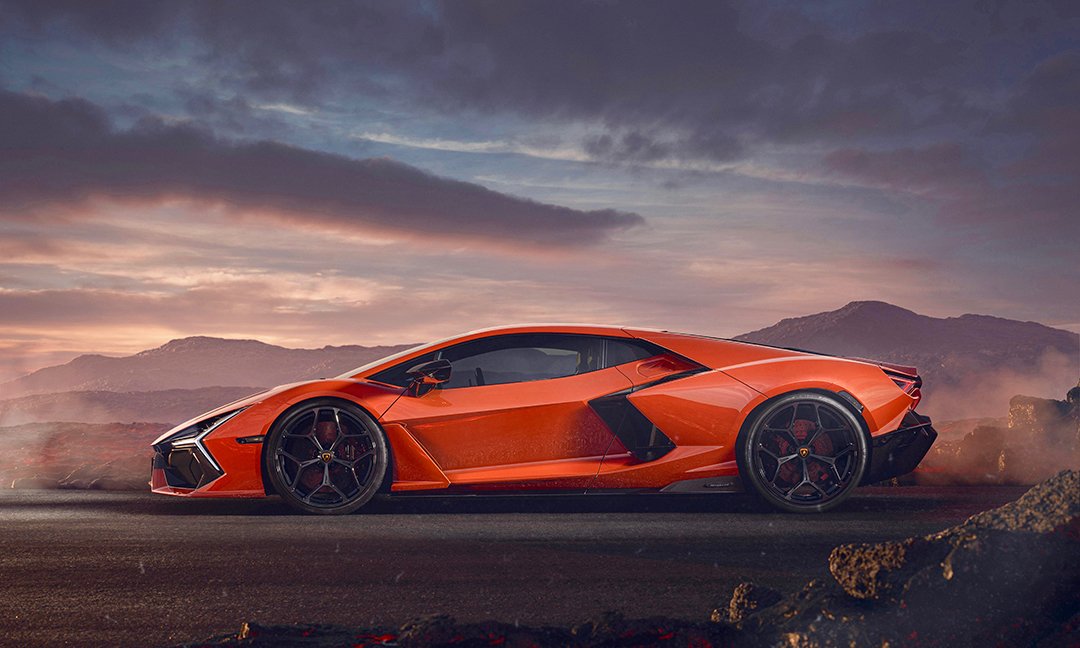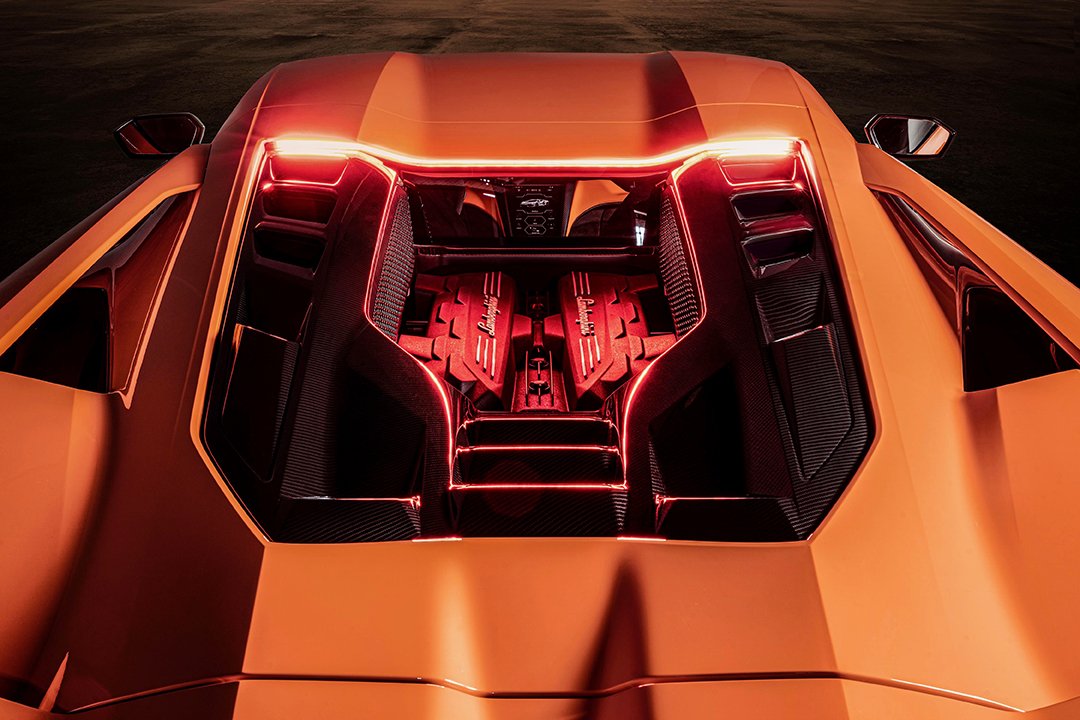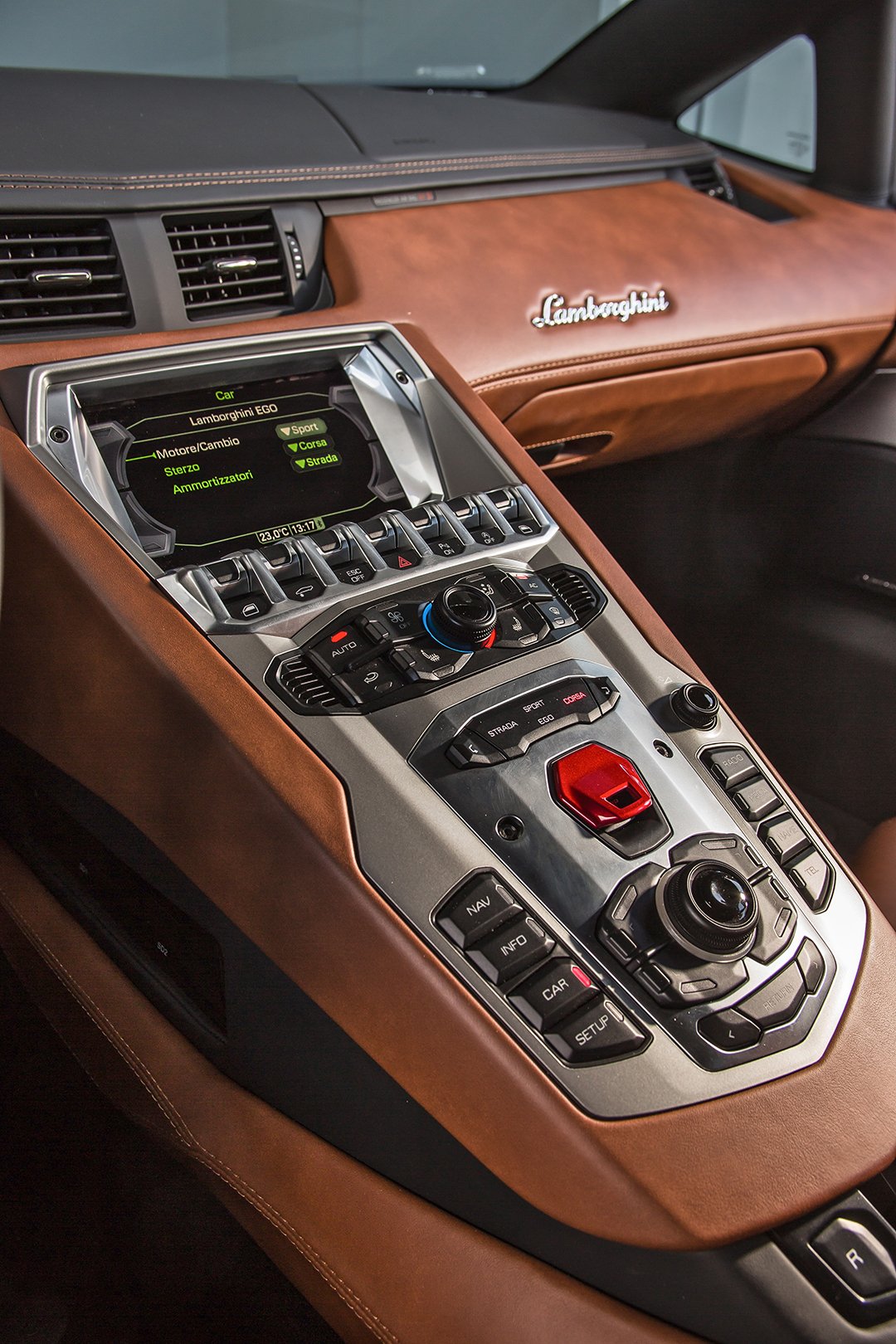Rebel with a cause
By Ian Kuah
Time flies when you are having fun so the saying goes, and Lamborghini celebrated its 60th Anniversary in 2023. As with arch rival Ferrari down the road in Maranello, the birth of the Lamborghini marque was the result of one man’s vision.
The story goes that the singular driving force behind Ferruccio Lamborghini founding his own sportscar company was an animated discussion he had with Enzo Ferrari over some problems with his cars. This was no surprise as both men were well known for their fiery tempers and intolerance of anything less than perfection.
It is 1962 and Ferruccio Lamborghini, a wealthy tractor manufacturer from nearby Sant’Aga Bolognese was the proud owner of two Ferraris. However, his experience with the Prancing Horse marque did not live up to his expectations and one day he headed to Maranello to lodge his complaints to Enzo Ferrari personally.
Drama is a way of life in Italy, and during his audience with il Commendatore, Lamborghini pointed out that the clutch was inadequate for the power of the engine and suggested that Ferrari should use stronger components. Incensed by this comment Enzo retorted, “The clutch is not the problem. The problem is you don’t know how to drive a Ferrari so you break the clutch.”
Ferruccio’s reply was equally charged with emotion and contained a challenge that would change the path of automotive history. “I will never buy another Ferrari. I will make my own cars, then I can be sure they work the way I want them to.” One year later Ferruccio founded Automobili Ferruccio Lamborghini S.p.A. in his home town of Sant’Agata Bolognese to build “the perfect sportscar”.
The result was the Lamborghini 350GT of 1964, a two-seat grand tourer with a 320hp 3.5 litre V12 motor under its long bonnet. Lamborghini made 120 of these cars over two years before it evolved into the more powerful 400GT, the second series offering 2+2 seating.
However, the car that really put Lamborghini on the map was the Muira. Initially designated the P400 in prototype form, it featured a revolutionary transverse mid-engine V12 layout and was developed by the engineers in their spare time against the wishes of Ferruccio who preferred GT cars to the motorsport-biased machines made by Ferrari.
The P400 made its public debut at the 1966 Geneva Auto Salon to such a rapturous reception that Ferruccio was forced to green light the car for production, if only for the marketing boost it would give the Lamborghini name. Christened ‘Muira’, after a famous Spanish fighting bull breeder, this revolutionary sportscar and the fact that Ferruccio’s star sign was Taurus, led to the logical adoption of the raging bull as the Lamborghini marque badge.
Entering production in 1967, the Muira was catapulted to international fame on the big screen when it was chosen for a cameo appearance in the 1969 movie, “The Italian Job”. The opening scene with the Mafia boss driving his orange Muira on the Great St. Bernard Pass high in the Italian Alps to Matt Monro’s rendition of the Quincy Jones composition, “On Days Like These” quickly became part of motoring folklore.
While the evolution of Ferrari’s road cars followed a fairly predictable step-by-step process, the same cannot be said for Lamborghini. From the start Ferruccio aimed to break the mould of convention, and the designs that emerged from his team of big-name designers and engineers tended to raise eyebrows. It also meant that the typical Lamborghini buyer, like Ferruccio himself, was more often than not an entrepreneur with a rebellious streak.
Where Ferrari engaged Pininfarina to style his cars, Bertone was Lamborghini’s designer of choice, while his three top engineers were Giampaolo Dallara, Paolo Stanzini and Bob Wallace, the race driver mechanic from New Zealand who became his chief test driver.
The cars that left the Sant’Agata works in the ensuing years were all unique in both styling and mechanical innovation with Bertone’s Marcello Gandini responsible for these outstanding Lamborghini designs.
The names of mass production Lamborghinis; Espada, Islero, Jarama, Urraco, Diablo, Gallardo, Murciélago, Aventador, Huracan, Reventón and others all flowed from the Spanish fighting bull connection. The only car that did not adhere to this formula was the Countach of 1974. A Piedmontese expression of amazement, “Countach!” could well be a common reaction to first sight of this dramatic and futuristic wedge-shaped supercar with its upward opening butterfly wing doors.
Along the way the mighty all-alloy four-cam 60-degree V12 engine grew in displacement from 3.5 to 6.5 litres across two generations, the latter bringing more efficient four-valve cylinder-heads. The original 3.5 litre V12 started out with 284hp, and the most potent variant of the 6.5 litre second generation motor signed off with a whopping 830hp without a turbocharger in sight!
This mighty V12 also formed the basis for some very successful offshore powerboat championship winners, as well as powering the Lamborghini LM002 off-road machine conceptualised for the military. However, it was never adopted and ended up as a limited production status symbol for the wealthy. The current production Urus high-performance SUV, which shares its bi-turbo V8 with the Audi RS6 Avant, is the LM002’s spiritual successor.
World events and simple economics have a bad habit of overtaking small specialist car companies, and just as Ferrari eventually had to sell out to Fiat, Lamborghini encountered more than its fair share of financial problems.
In 1998, after several false dawns with various owners and investors the firm finally found a good fit under the umbrella of the Volkswagen Group. With Audi as its assigned Godfather for nearly a quarter of a Century, Automobili Lamborghini S.p.A. is now going from strength to strength. Sales have never been better, and for the first time in its history Lamborghini is now consistently profitable, delivering 10,112 vehicles in its 60thAnniversary year, a 10% increase over 2022 despite difficult economic conditions worldwide.
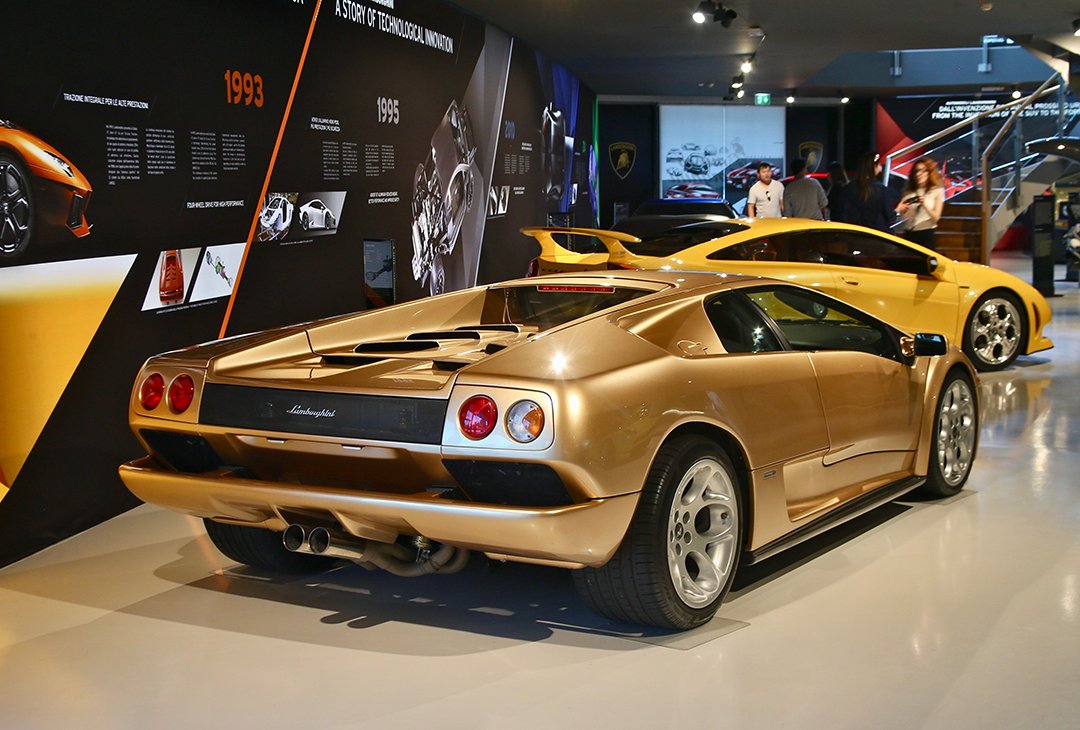
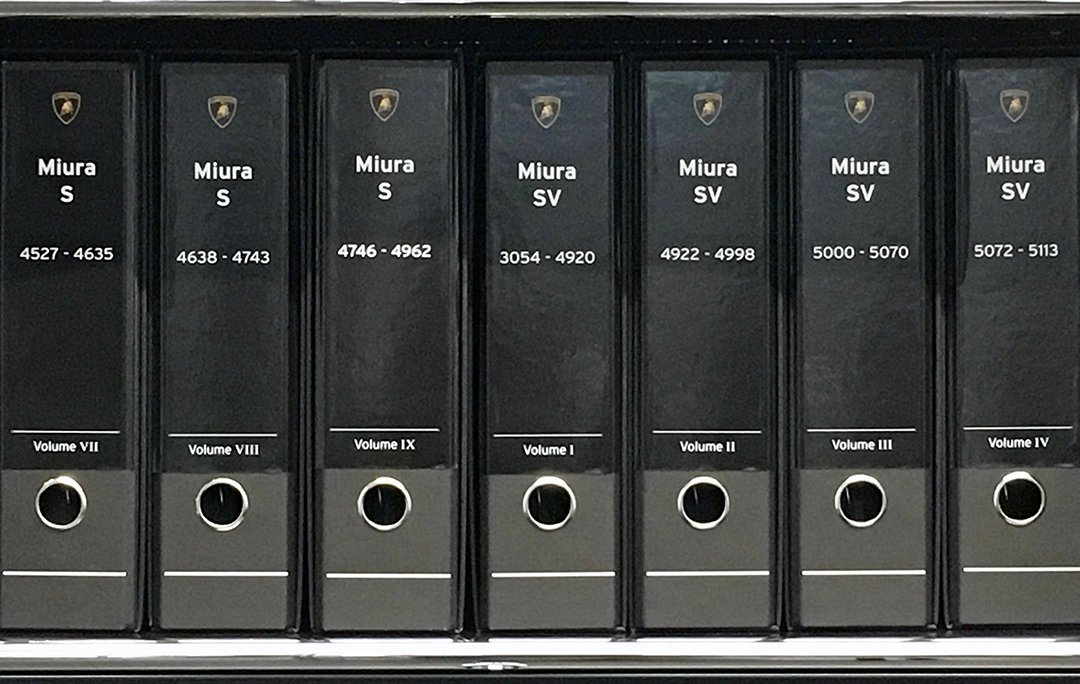

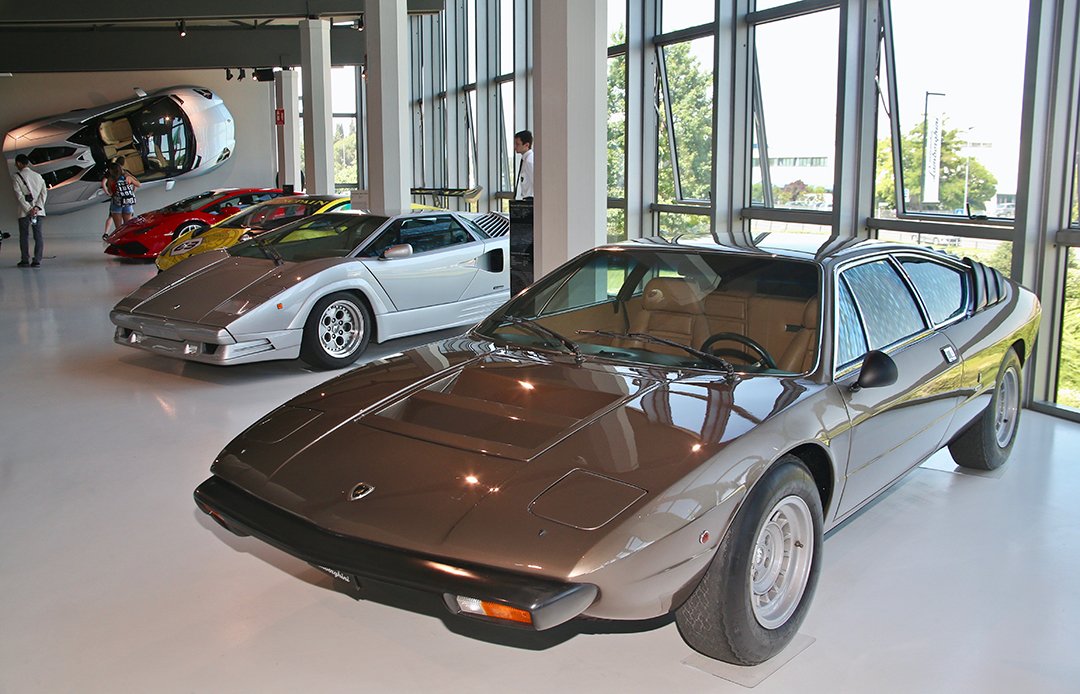
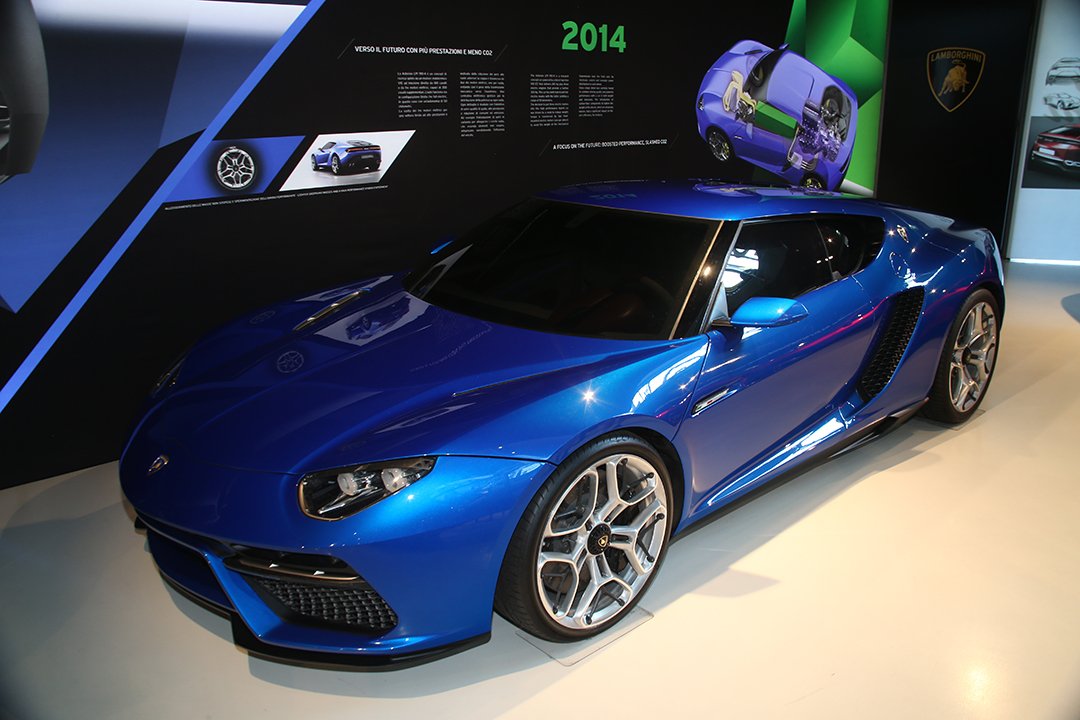
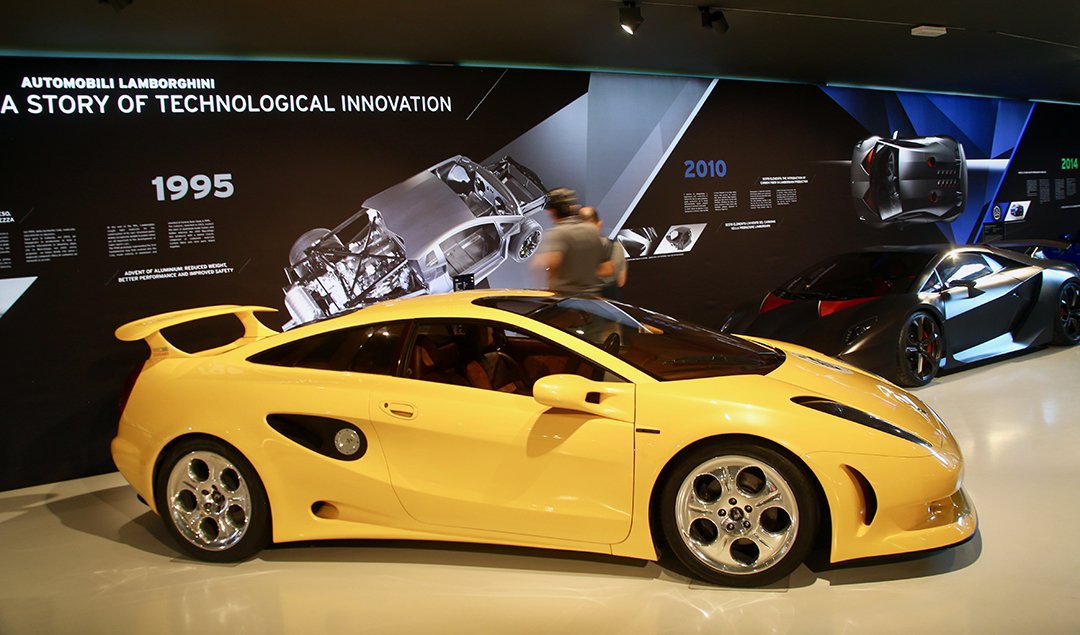
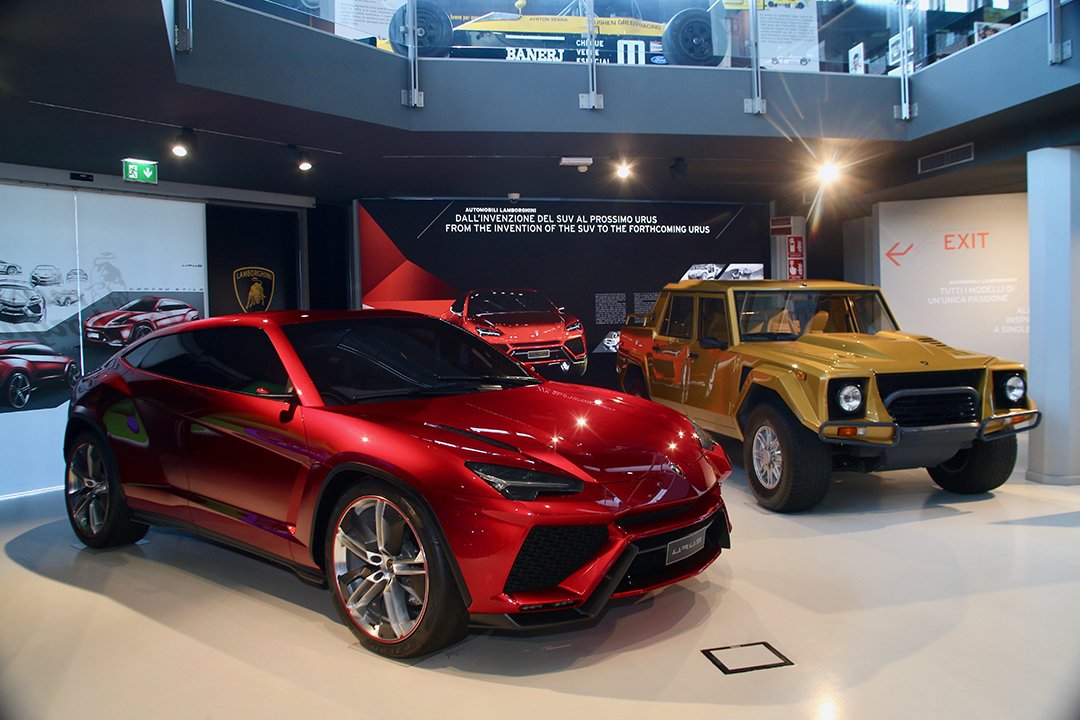

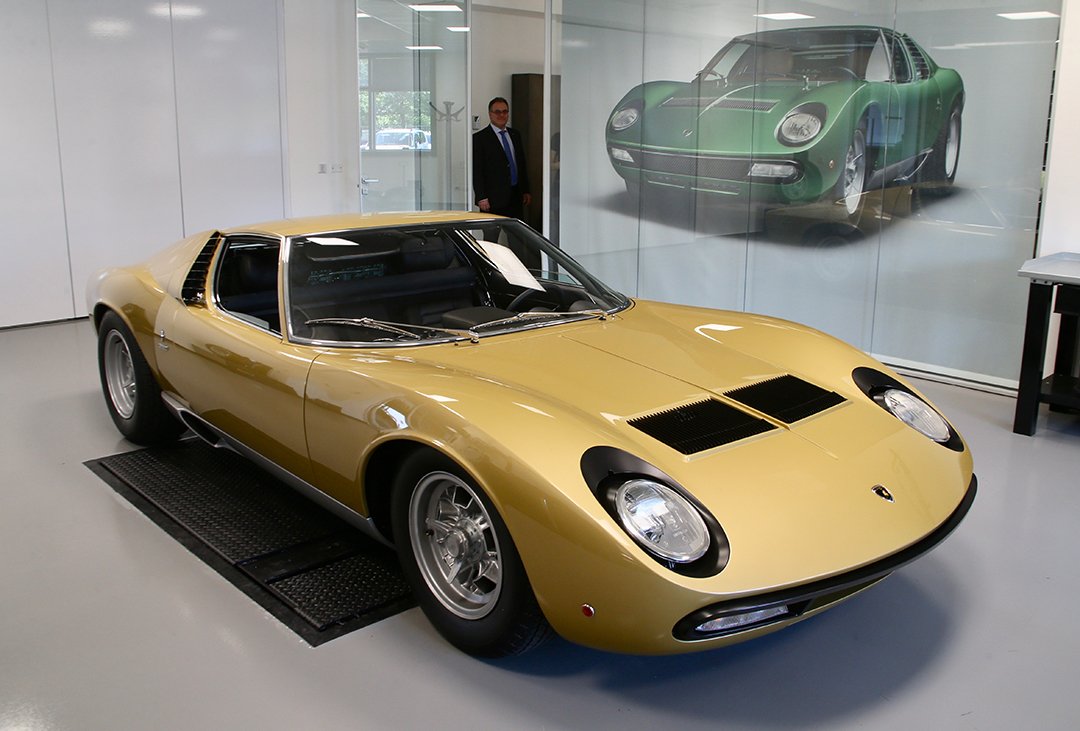
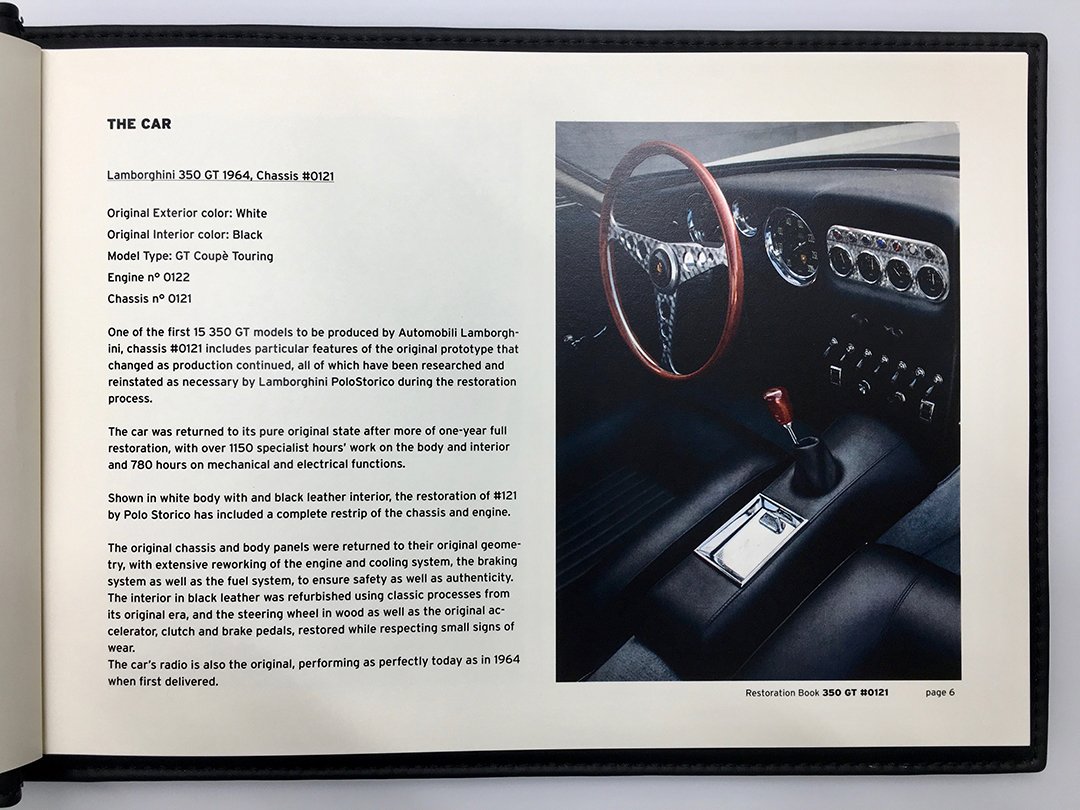
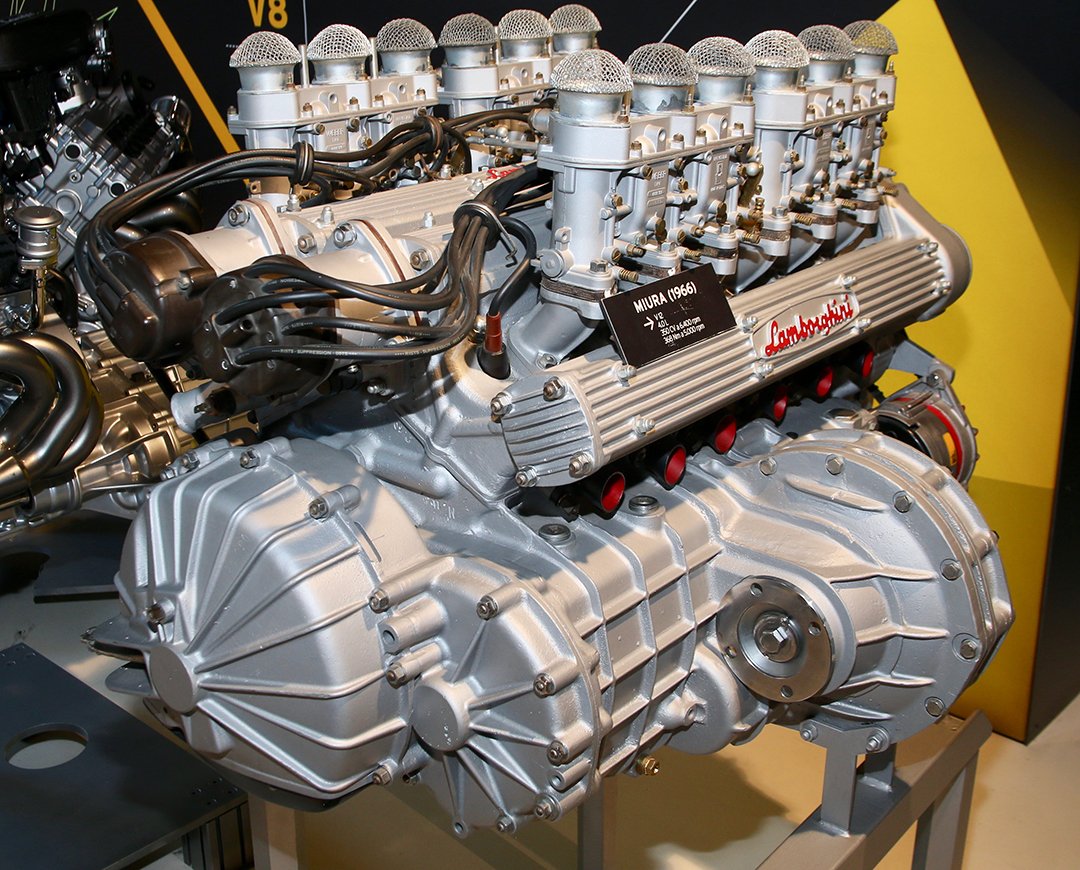
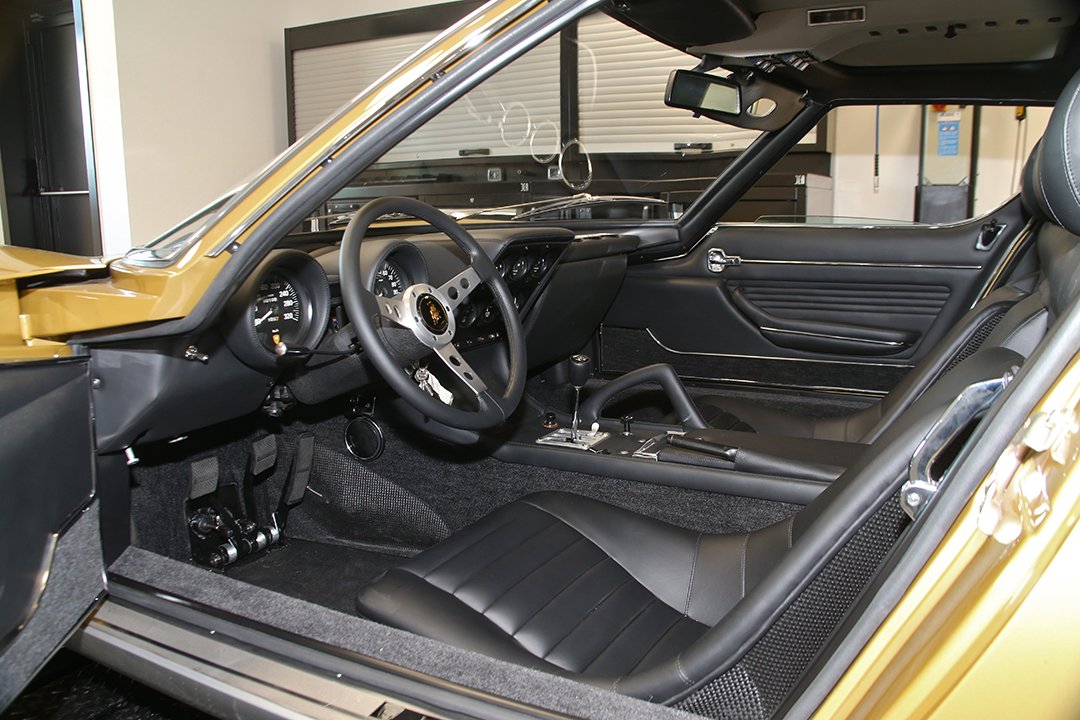
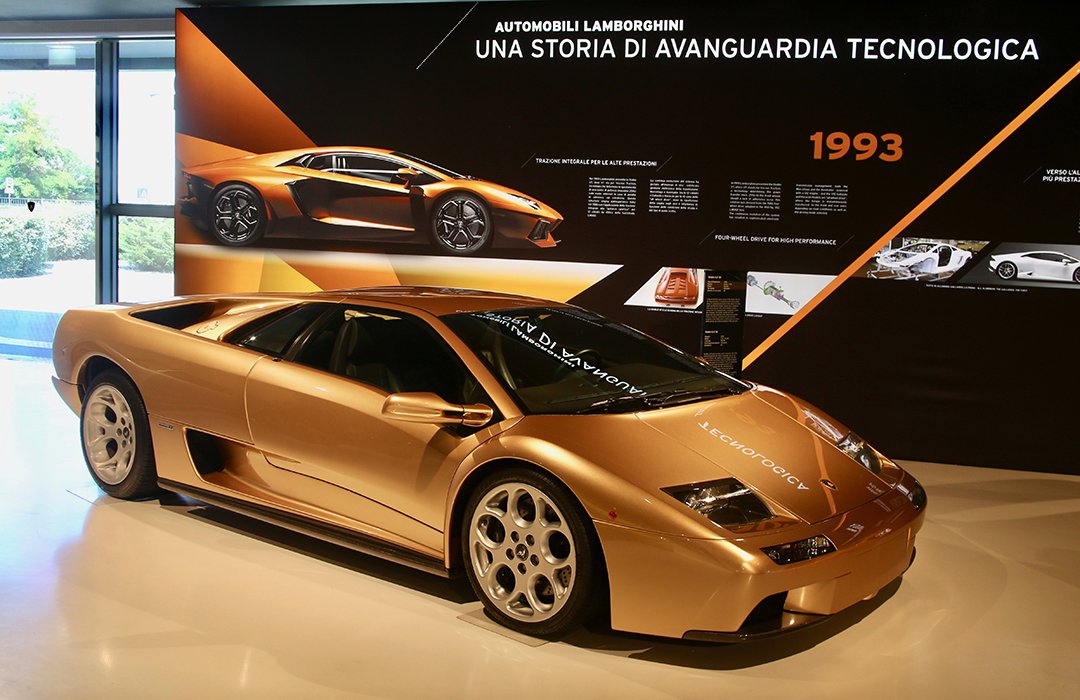

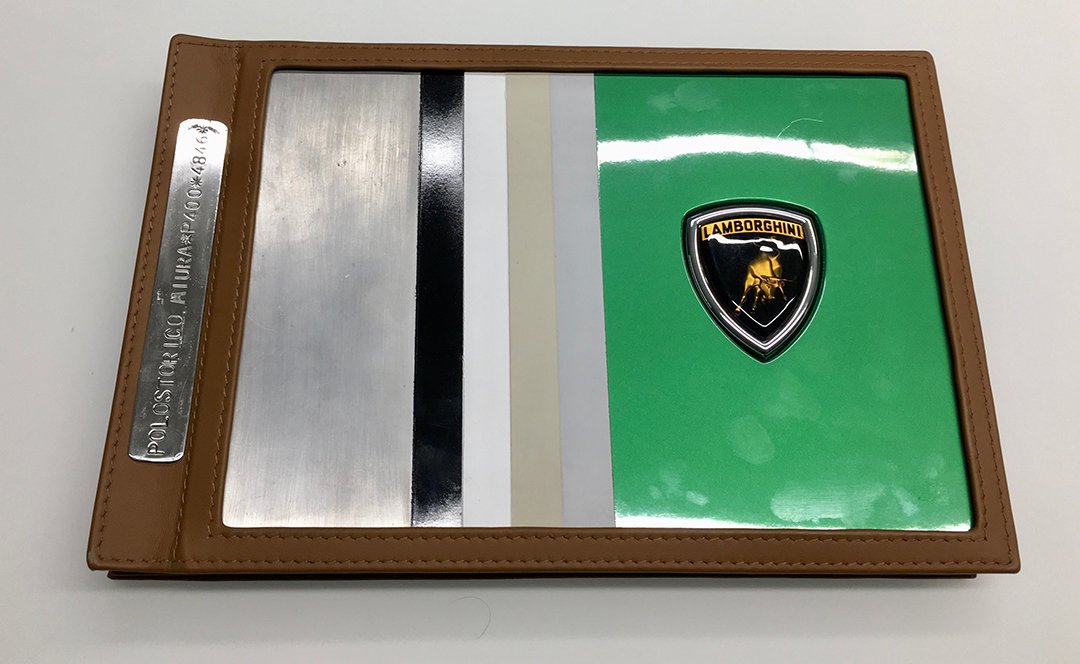
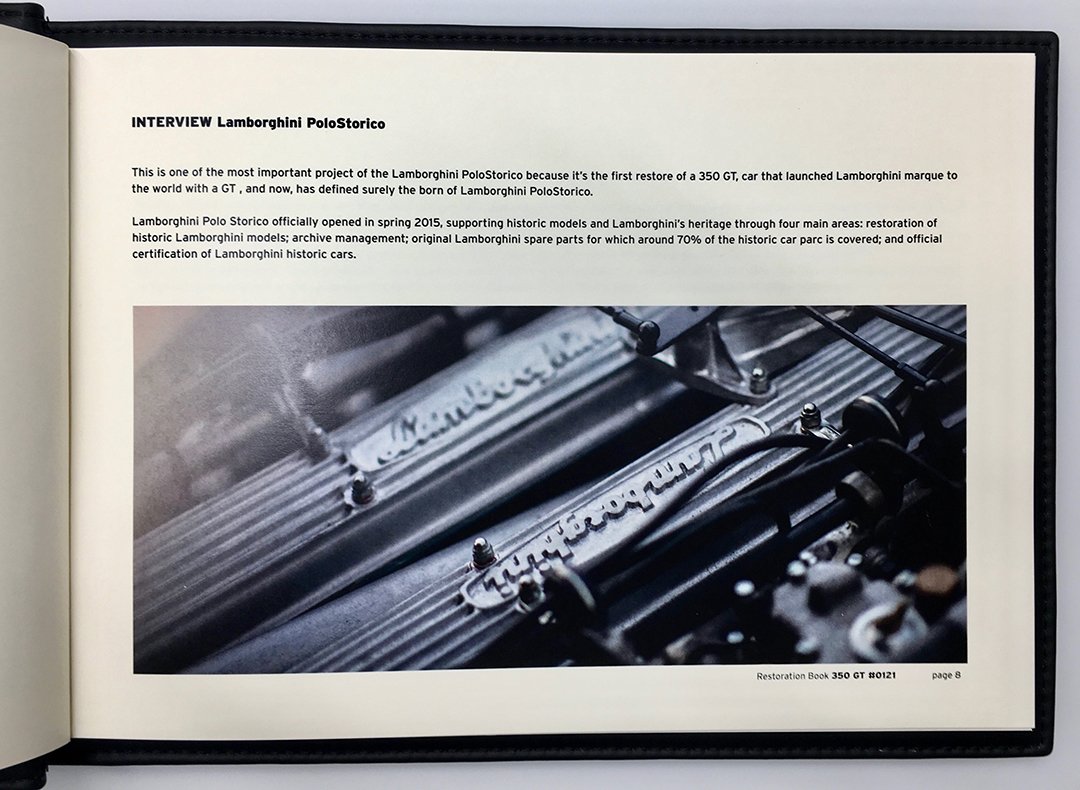
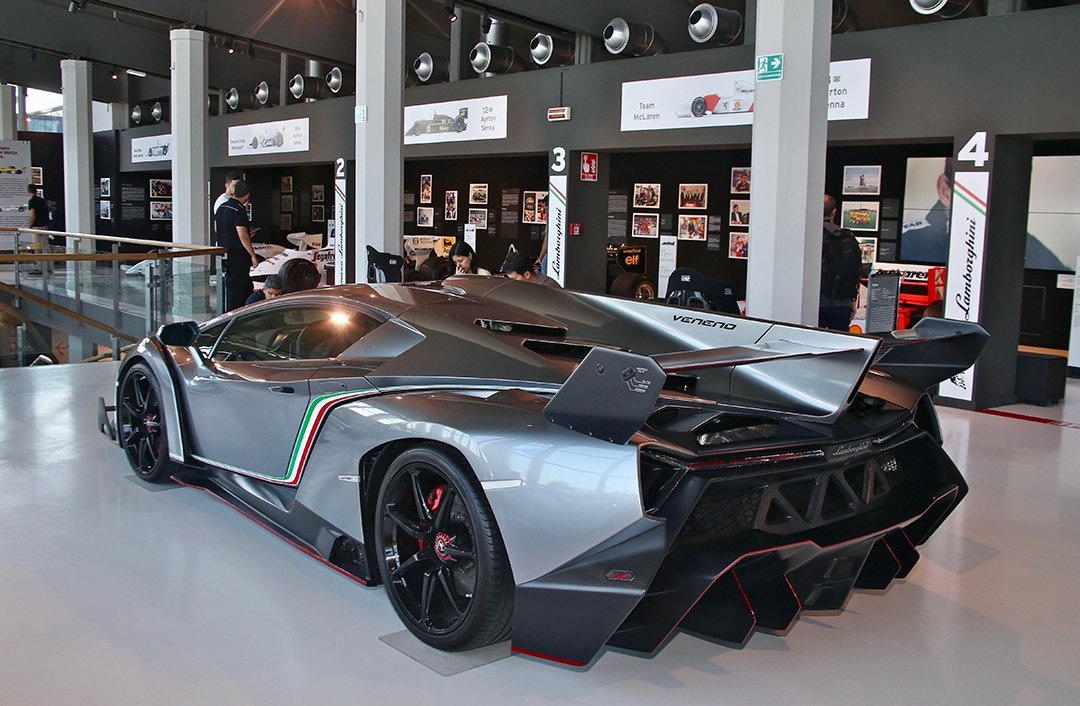
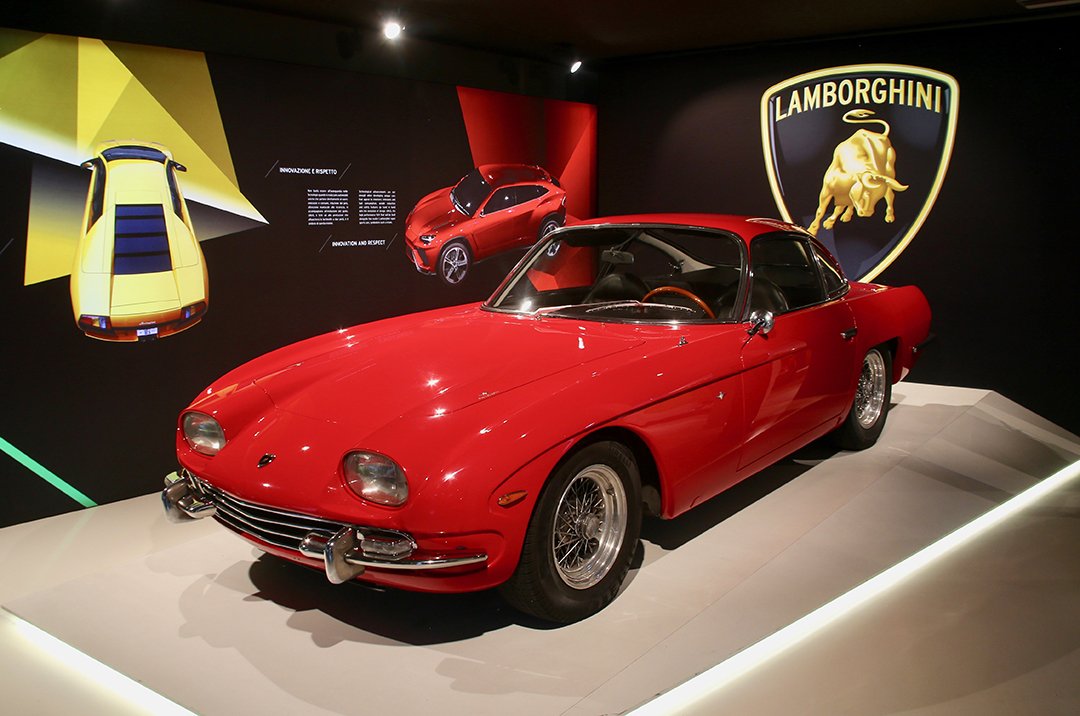
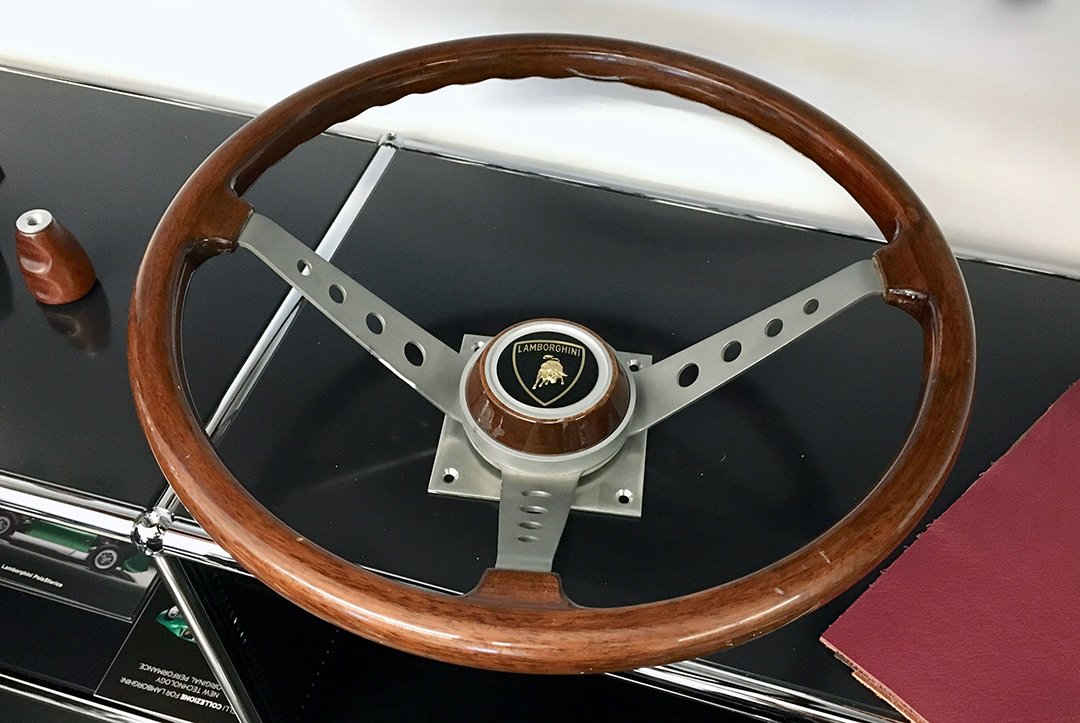
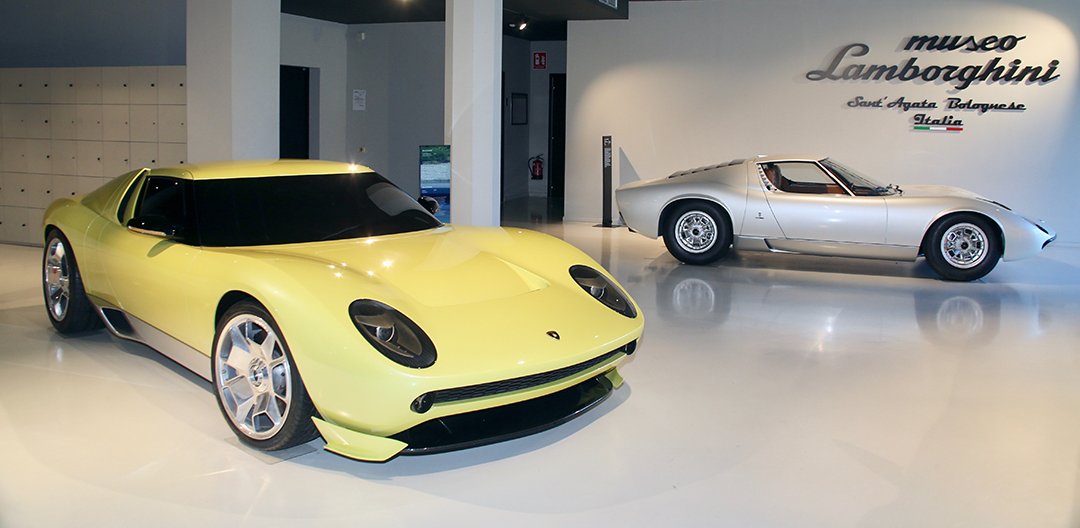
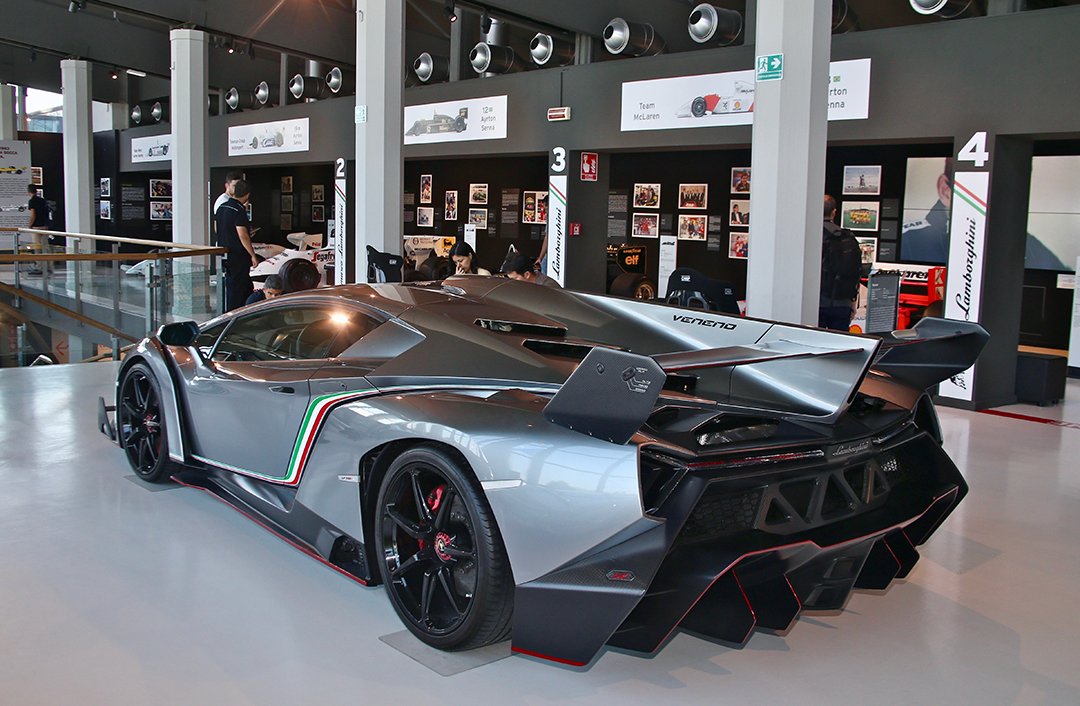
LOOKING BACK
If you are in the Modena area of Italy a visit to the Lamborghini Museum at the factory in Sant’Agata Bolognese is a must. Apart from being able to see an example of every Lamborghini model ever made, you can also observe their PoloStorico division returning a classic model to as good if not better than new condition, with an exacting record of the restoration compiled for posterity along the way.
At the same time, someone who has commissioned a new Lamorghini from their local dealer can visit the factory and choose from a wide range of paint finishes and fine leather and Alcantara for the interior. With personalisation the name of the game here, you can even choose finishes to match the colour of a favourite jacket or bag if you so wish.
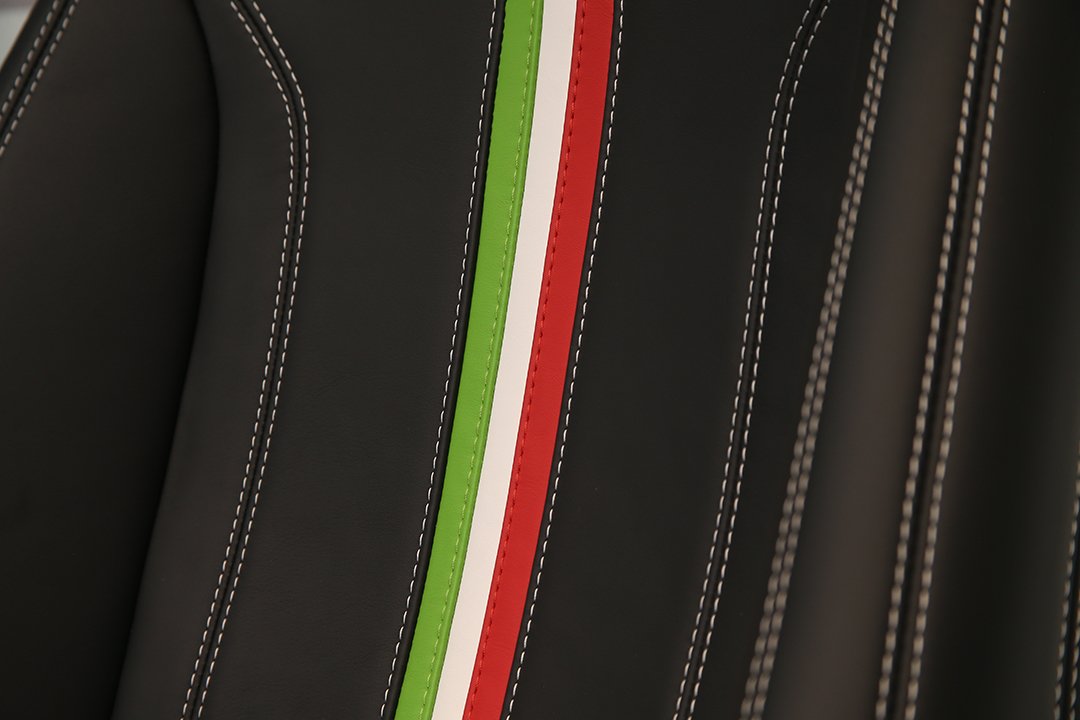
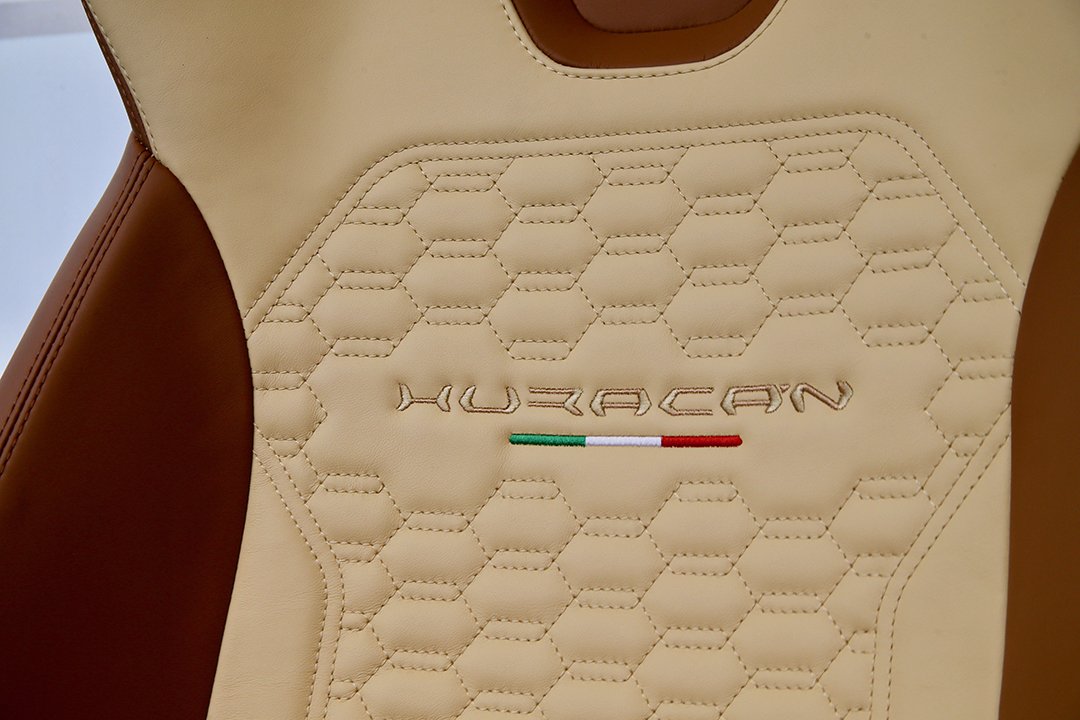
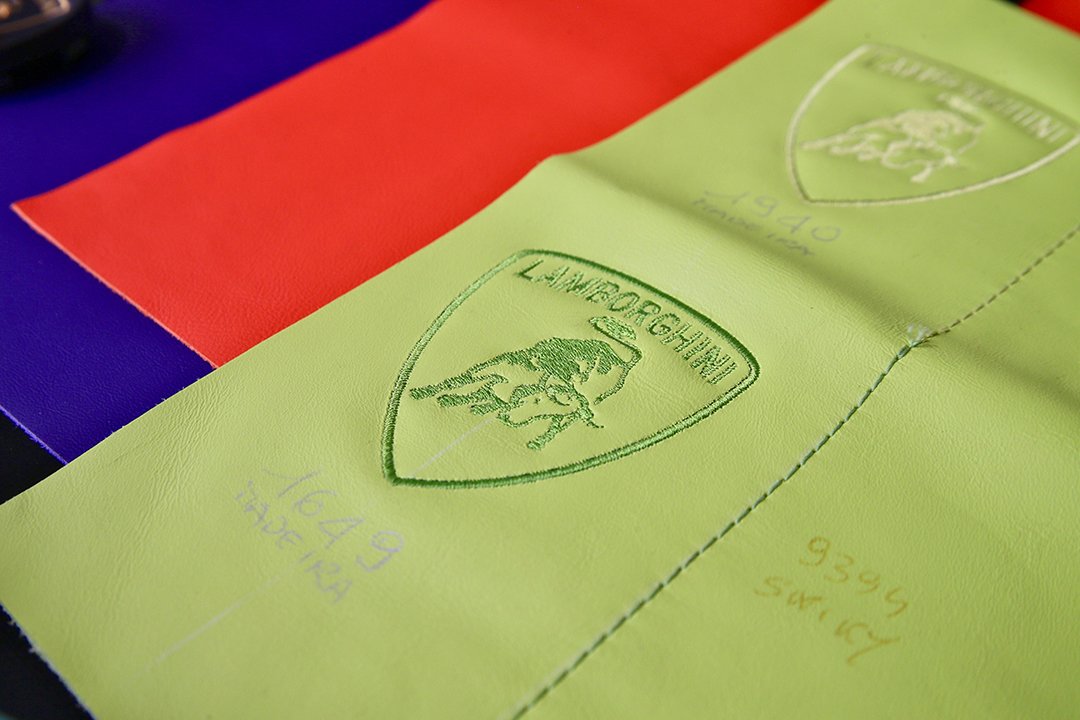
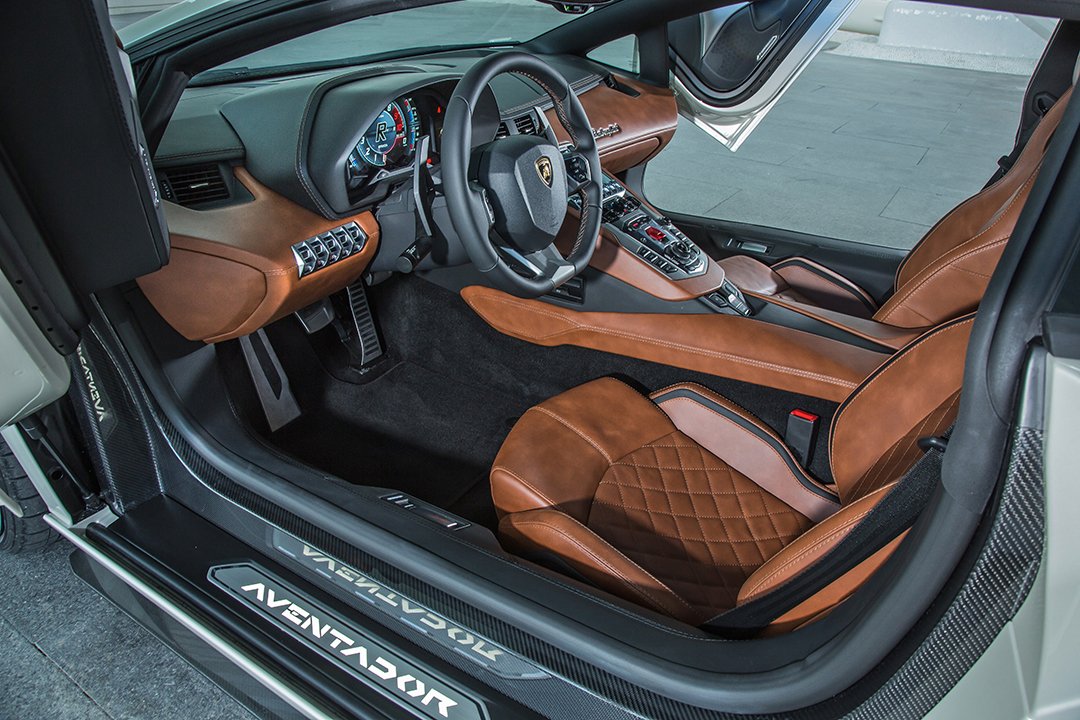
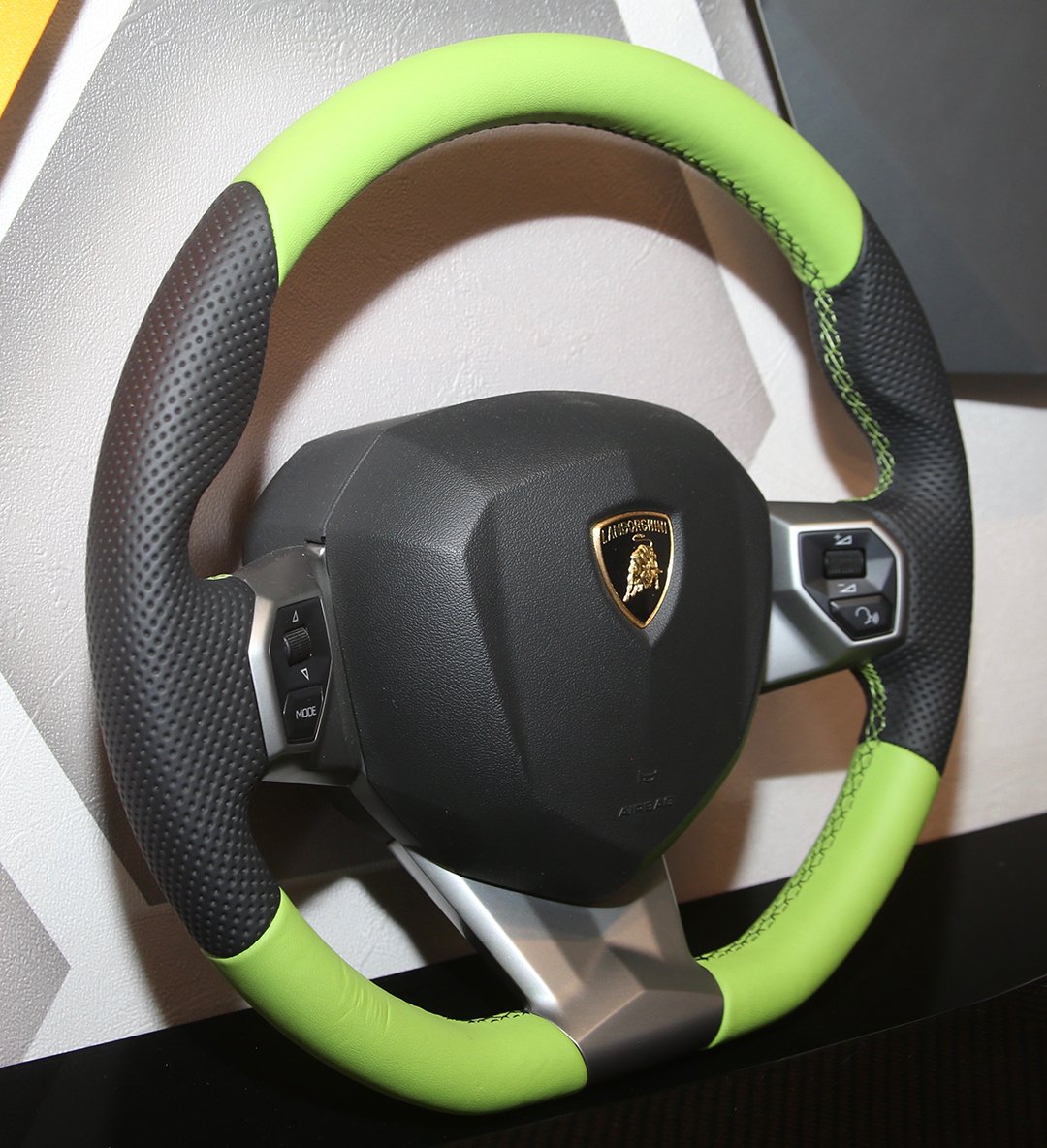
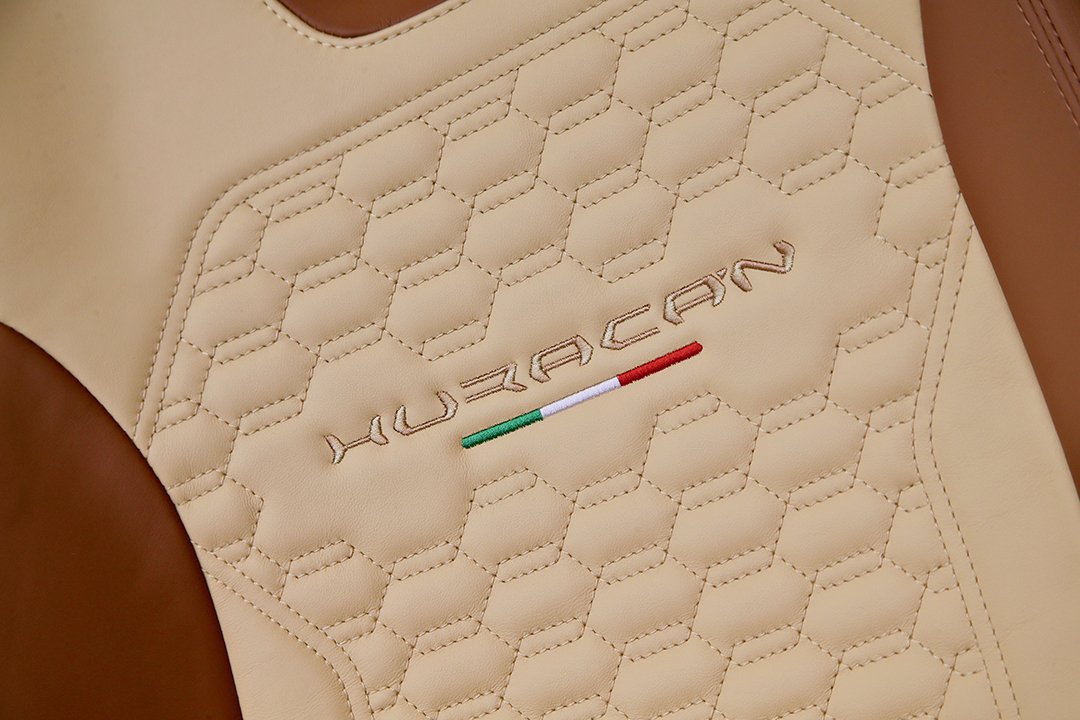

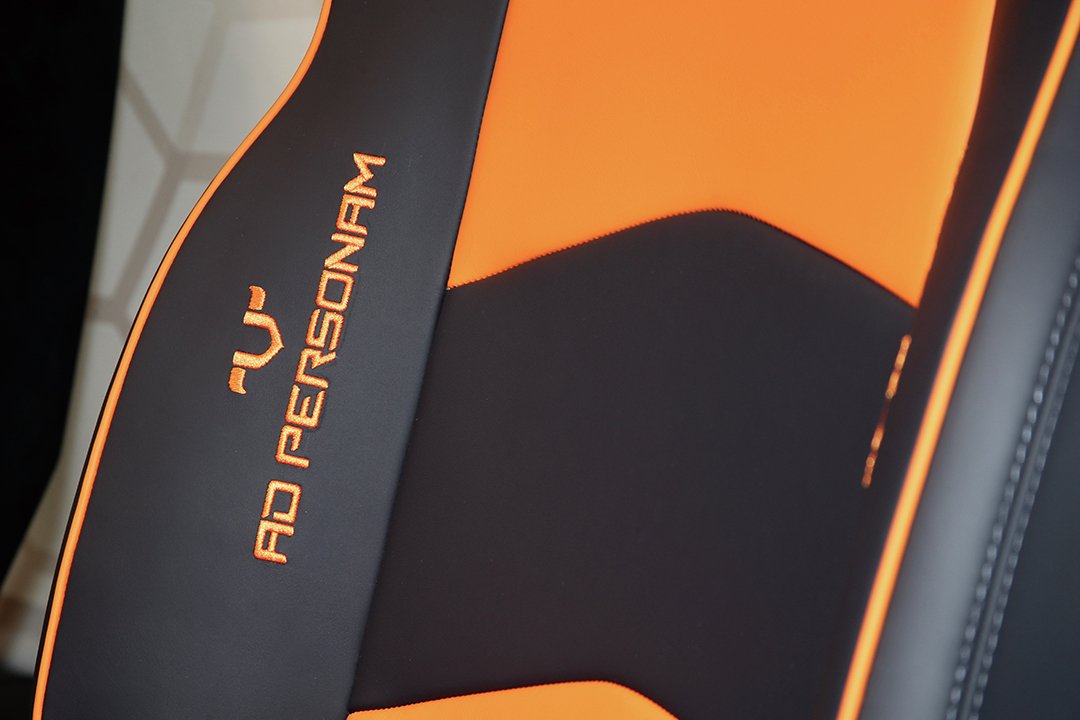
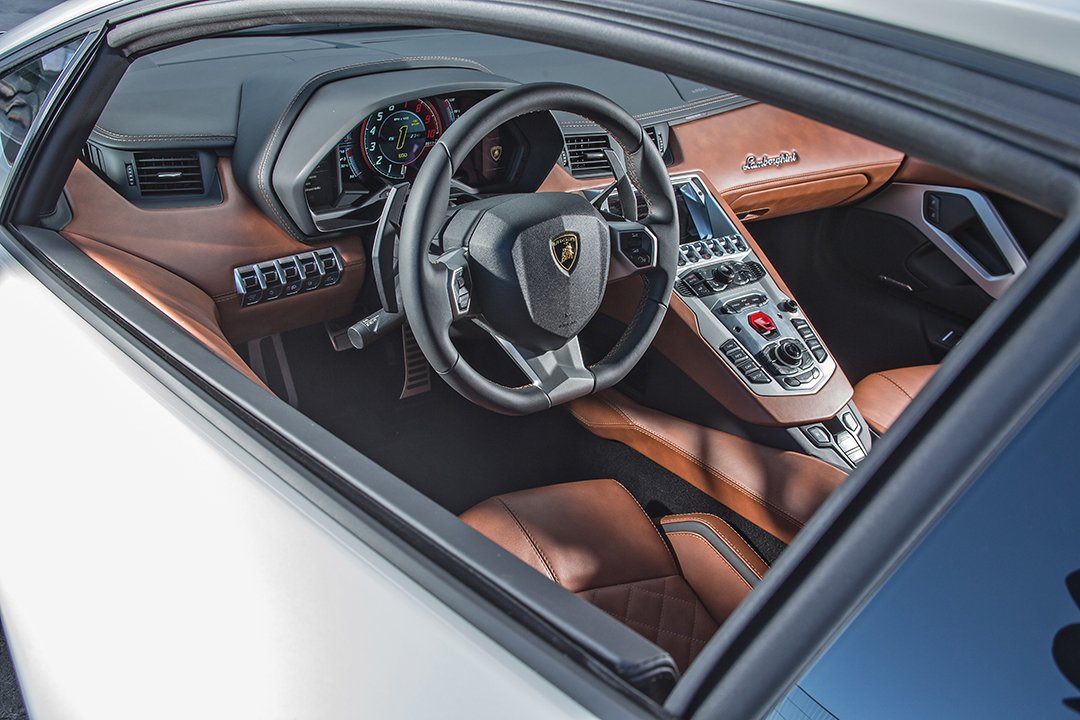
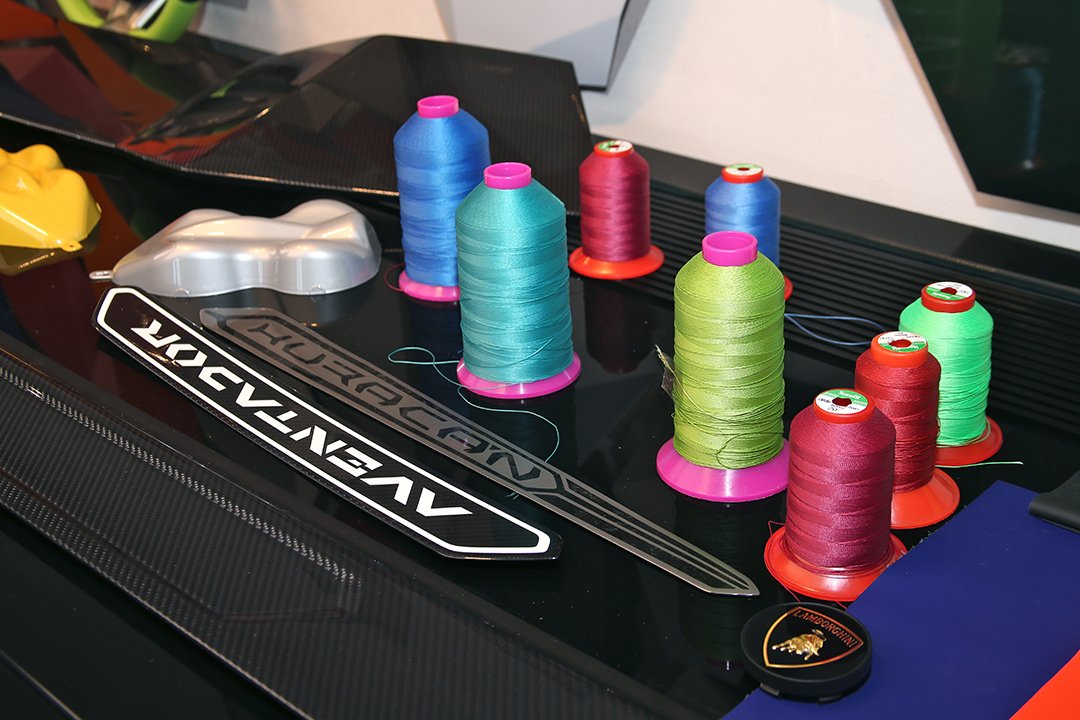
LOOKING FORWARDS
While electrification may be a path, albeit a highly politically charged (pun intended) one, for mainstream vehicles, exemptions have been given to low volume supercars and hypercars that will be able to run on the synthetic fuel being developed by Porsche and others.
However, as has already been proven by the likes of Ferrari and McLaren, electric motors can be used to usefully increase the straight-line performance combustion engine cars. As an e-motor produces peak torque barely off idle speed it can provide near instantaneous response and significantly boost performance while the combustion engine is still revving towards its peak power.
The Plug-in Hybrid Lamborghini Revuelto that entered production in late summer 2023 is named after a Spanish fighting bull that fought in the Barcelona arena in the 1880s.
In a break from the past the Revuelto is built around a light and strong carbon-fibre structure instead of the traditional Lamborghini space-frame. The advantages are lower weight, superior torsional stiffness (40,000 Nm/degree of twist in this case), and better crash safety.
Wind-tunnel honing has resulted in a downforce increase of 33% and 74% over the front and rear axles compared to the Aventador Ultimae that represented the aerodynamic pinnacle of the outgoing Lamborghini flagship model.
At 218kg, the Revuelto’s third generation naturally-aspirated 6.5 litre V12 (L545) engine is 17kg lighter than the outgoing Aventador unit and delivers a whopping 825hp and 725Nm of torque to the rear wheels only.
An axial flux e-motor drives each front wheel while a radial flux e-motor positioned above the new eight-speed dual clutch gearbox, behind the combustion engine to drive the rear axle when selected via the drive mode control. Said to shift ratios even faster than the fast and smooth seven-speed dual-clutch used in the Huracan, this new transmission will come like a breath of fresh air for long suffering Aventador owners who have suffered the clunky single-clutch automated manual transmission from day one.
The 190hp and 150Nm combined output of the three e-motors can support a fully electric drive mode, with permanent 4WD present with all of the 13 computer-controlled possible drive modes from all combustion engine to all e-drive. This gives the driver the choice of gliding through town at night in e-power and then going to full noise on a mountain road.
The combined output of the combustion and electric motors is 1,015hp and 1,062 Nm of torque, and thanks to its 4WD traction the 1,772 kg Revuelto catapults to 100km/h in just 2.5 sec and on to a top speed of over 350km/h.
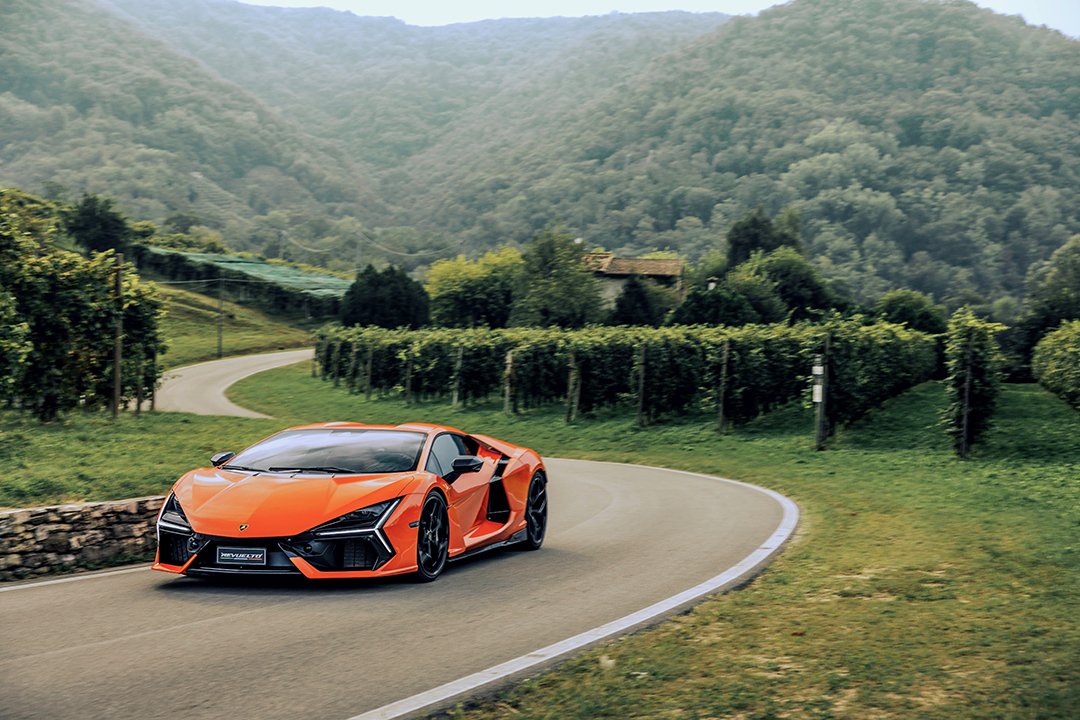

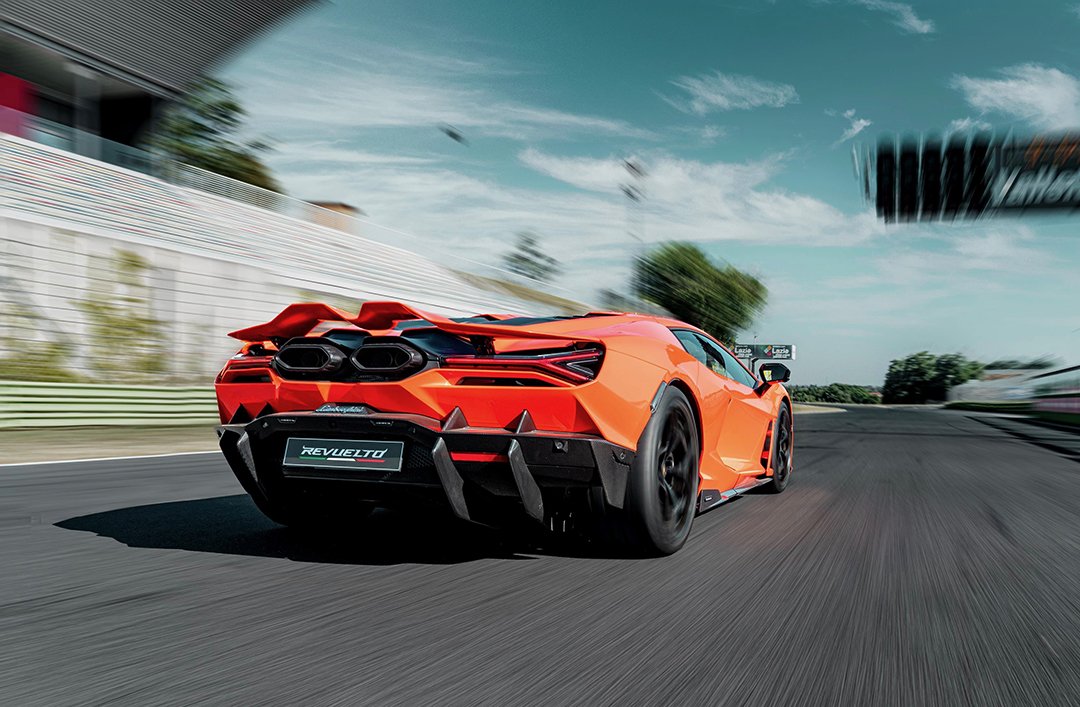

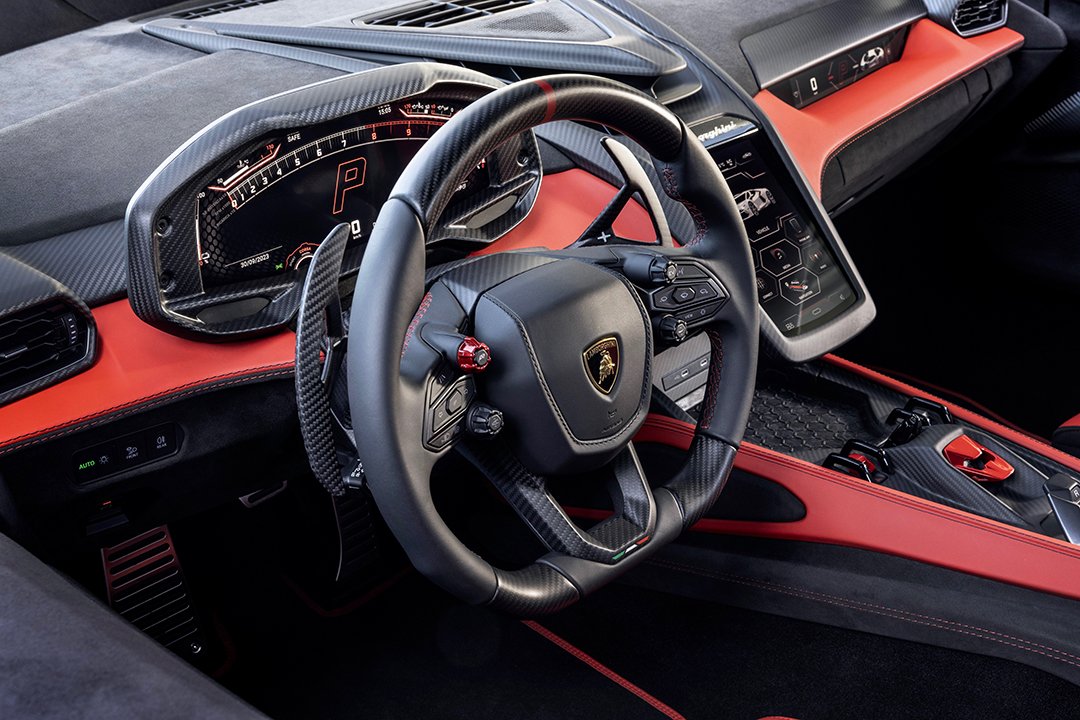
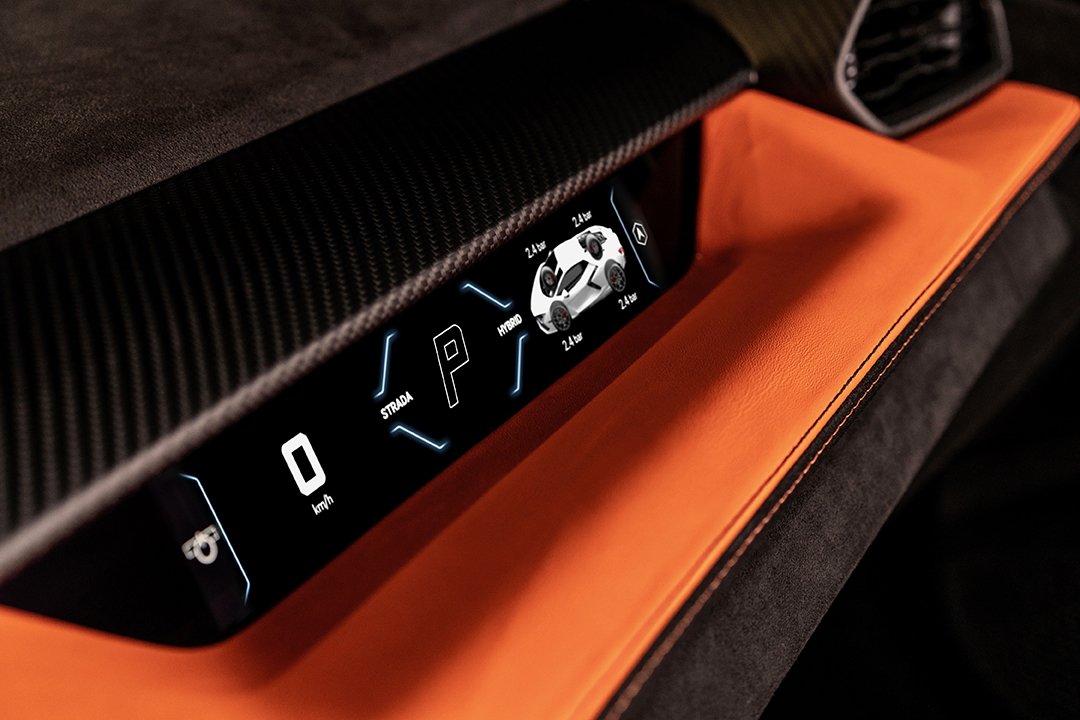
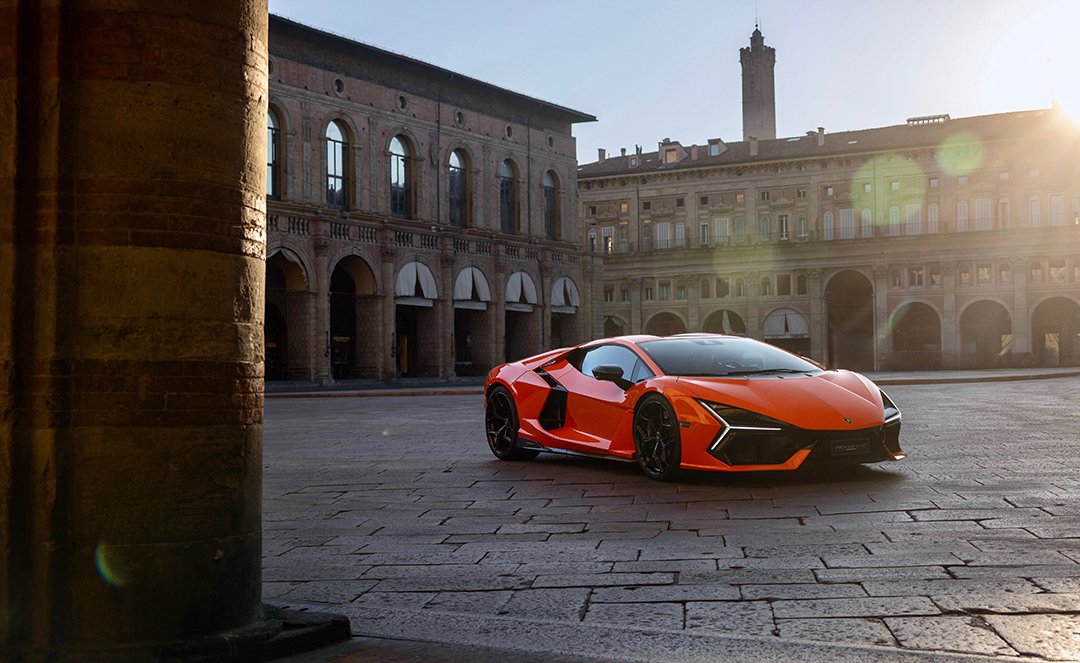

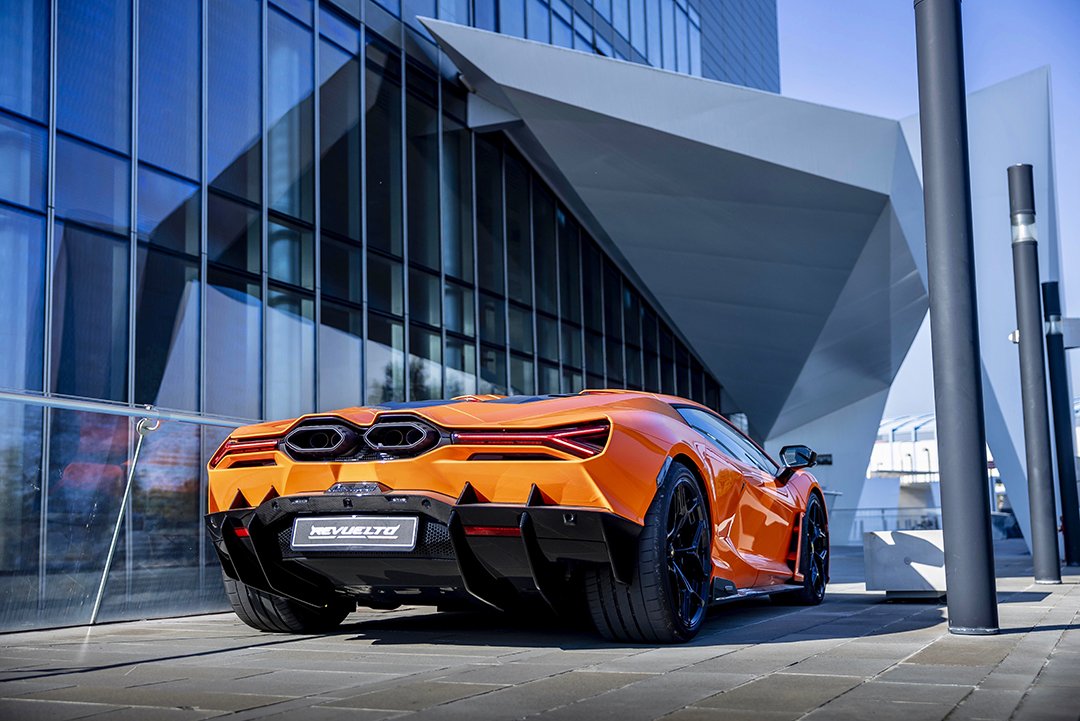

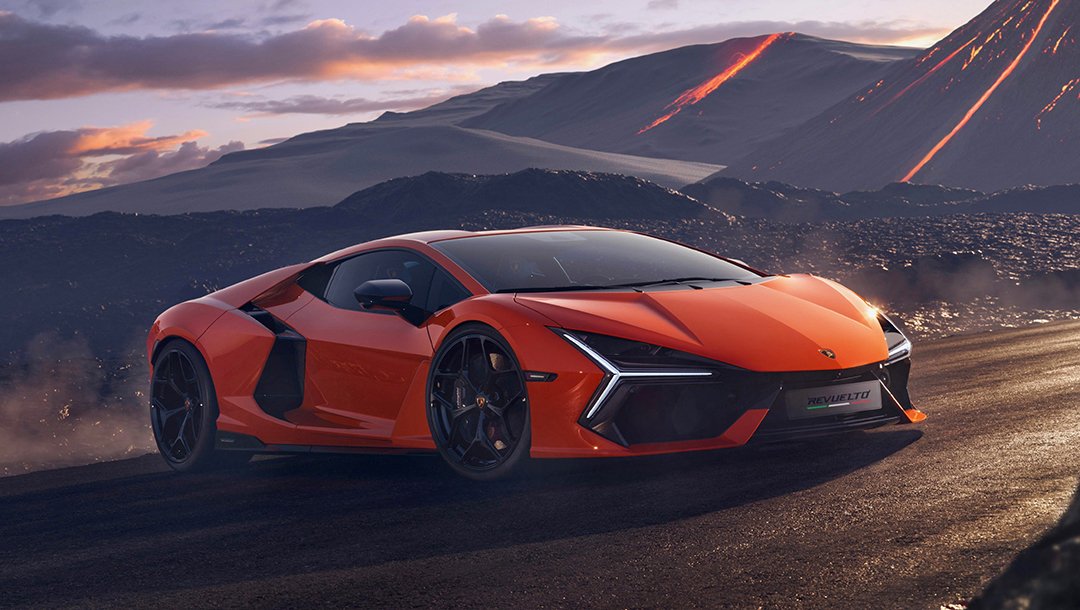
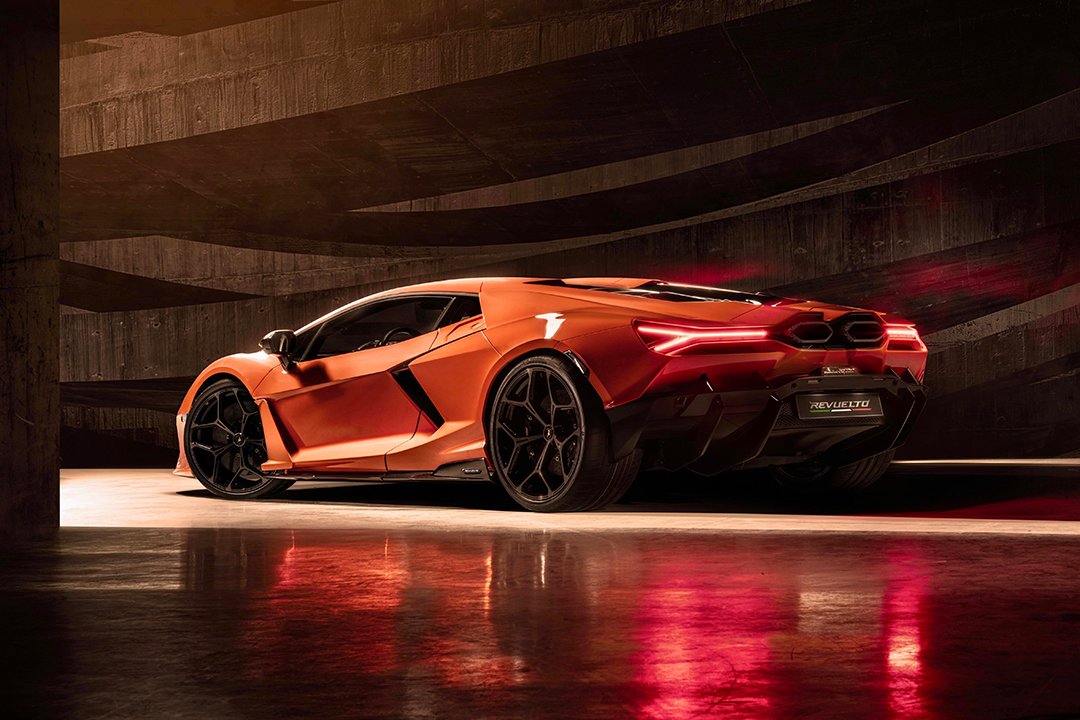
The compact but powerful 4,500W/kg lithium-ion battery pack is positioned within the central tunnel to keep centre of gravity as low as possible and aids the cars slightly rearward biased 44/56% front/rear weight distribution that aids handling balance as well as traction off the line and out of bends. The inherent handling and grip conferred by the massive 265/30ZR21 and 355/25ZR22 tyres is further enhanced by rear-wheel-steering and e-motor torque vectoring.
In common with other premium flagship models on sale today state-of-the-art electronic features have been incorporated into the Revuelto. On board active systems include an Advanced Driver Assistance System (ADAS) that uses cameras, radar and sensors for Active Lane Departure Warning, Lane Charge Warning, Adaptive Cruise Control and Rear Cross Traffic Alert to aid safe reversing. The LED Matrix headlamps have an Auto Adaptive low beam cornering and anti-glare function for high beam.
Using the Lamborghini Unica mobile app, the driver can monitor the cars status at any given time, with the cars position when parked, fuel level, battery charge and electric range readable from your phone. Some functions can also be used with an Apple Watch.
The most interesting car companies have a captivating story to tell, and Lamborghini has always had a seat at the top table in this respect. Thanks to the steadying hand of Audi, the revolutionary design and engineering ideas born in Sant’Agata Bolognese are finally matched by the build quality and dealer support they have always deserved.

